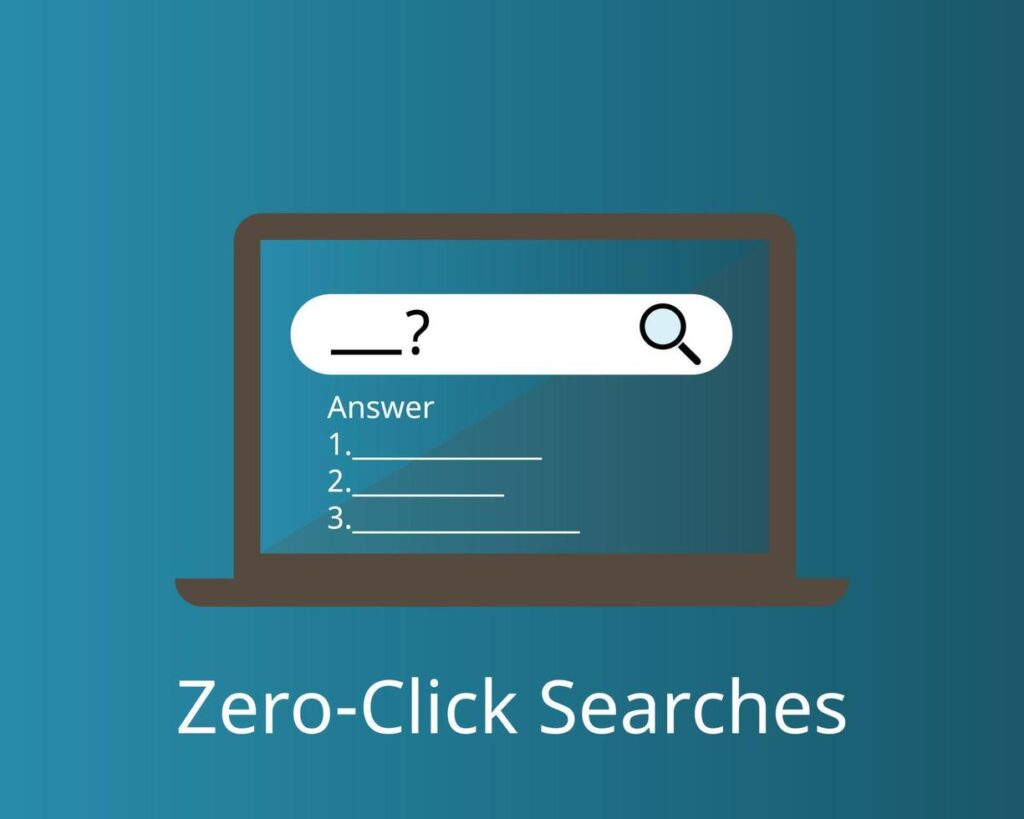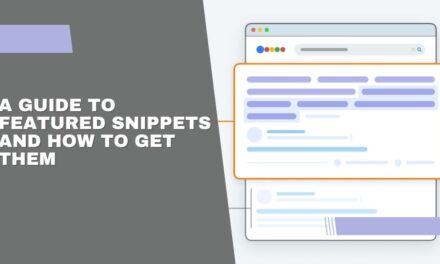Zero-click searches are search queries that provide answers on the search engine results page without requiring users to click on a website. Normally, this information is showcased as highlighted snippets, knowledge panels, or fast answer boxes, facilitating users in quickly accessing information. Zero-click searches are more frequent as search engines such as Google improve to offer a smoother user experience.
Zero-click searches happen due to a range of different reasons. They frequently occur when individuals need simple information like definitions, calculations, or factual data, which search engines can provide directly from their index. Featured snippets are a major reason for zero-click searches. These excerpts extract information from external websites and display it in a brief structure, like a paragraph, list, or table, to provide instant answers to user questions. This pattern is additionally influenced by the implementation of rich results such as local packs, which display business details including addresses and phone numbers, eliminating the necessity to visit individual websites.
The rise of zero-click searches has a significant impact on search behavior and website traffic. While they increase visibility and authority for brands that earn featured snippets, they may also reduce the number of visits to these sites since users can obtain the information they need without clicking. As search engines continue to evolve, businesses need to optimize their content for zero-click searches to stay competitive and visible within this evolving landscape.
Understanding Featured Snippets: The Core of Zero-Click Searches
Featured snippets are concise summaries displayed at the top of Google’s search results to answer a user’s query instantly. They are a significant part of zero-click searches, where users get the information they need directly from the SERP without clicking through to a website. The snippets typically include data extracted from third-party websites, formatted in various ways such as paragraphs, lists, tables, or even video highlights.
There are several types of featured snippets:
Paragraph Snippets: Provide a short text response to a query, often used for definitions or brief explanations.
List Snippets: Presented as numbered or bulleted lists, these snippets are ideal for step-by-step instructions or rankings.
Table Snippets: Show data in a tabular form, making it easier to compare information like pricing or features.
Video Snippets: Usually sourced from YouTube, these provide visual answers to questions related to “how-to” or tutorials.
Featured snippets have a big impact on zero-click searches because they answer common questions without the need for users to visit other pages. Research indicates that around 12.3% of search queries display featured snippets, as Google places a higher emphasis on user experience and fast access to information, leading to an increase in rich results on SERPs.

Benefits and Challenges of Optimizing for Zero-Click Searches
Optimizing content for zero-click searches, especially featured snippets, offers several benefits for businesses. One of the primary advantages is increased visibility. Being featured in a snippet positions your content at the top of the search results, often above organic listings, which can significantly boost brand awareness and authority. This placement is known as “Position Zero,” a highly sought-after spot that signals to users that your content is a trusted source of information. Appearing in featured snippets can enhance credibility, as users tend to view this position as authoritative and reliable.
Nevertheless, zero-click searches come with their own set of difficulties. A significant issue is the decline in click-through rates (CTR). Since users can find their answers from the snippet itself, they might not see the necessity to visit the website, which could result in a decrease in website traffic. This change results in a higher visibility but a potential decrease in the total number of site visitors. Furthermore, businesses might face challenges with owning content, since Google extracts excerpts from different websites without necessarily directing users back to the initial source.
Balancing visibility and traffic loss is crucial. Businesses must focus on creating content that not only appears in snippets but also encourages users to visit the site for more detailed information. This can be achieved by offering deeper insights or linking to additional resources on the page. Understanding the nuances of zero-click searches and optimizing content effectively helps companies maintain authority and visibility, even when clicks are not guaranteed.
Best Practices for Optimizing Content for Featured Snippets
To optimize content for featured snippets and increase the chances of appearing in zero-click searches, it’s crucial to focus on content structure and formatting. Begin by organizing content to target specific snippet types such as paragraph, list, and table snippets. Each snippet type has a unique format that can help your content be more appealing to search engines.
Using headers (H1, H2, H3) effectively is key to breaking down your content into clear sections. This helps Google understand the structure of your information and identify parts that may be relevant for snippets. Including question-based headers, such as “How to” or “What is,” can signal to Google that your content directly addresses common user queries, increasing the likelihood of appearing in a featured snippet.
Providing brief responses is essential for obtaining snippets. Make sure your paragraphs are concise, focused, and fall within the range of 40-60 words. Please provide the text you would like paraphrased. These formats simplify the process for Google to extract and display your content.
Additionally, optimizing meta descriptions and incorporating relevant keywords can help Google understand your content’s relevance to specific queries. Include keywords naturally in your meta tags, headers, and throughout your content to align with snippet requirements and improve your chances of being featured.
Content Types That Perform Well in Featured Snippets
Certain content types are more likely to appear in featured snippets, making them essential for optimizing zero-click searches. The most common types of content that perform well in these snippets include how-to guides, question-and-answer formats, and comparison tables. These content types are designed to provide quick and clear answers, aligning with Google’s goal of delivering concise information to users.
How-to guides are especially successful in being featured snippets due to their frequent utilization of detailed instructions that can be conveniently showcased as bullet points or numbered lists. In the same way, Q&A content specifically targets user questions, increasing the chances of being featured in a paragraph or list snippet. Comparison tables, which display data in a parallel manner, are useful because they offer organized information that is simple for search engines to extract and show.
In addition to these structured content types, evergreen content plays a significant role in maintaining snippet rankings over time. Since evergreen content remains relevant and useful, it is more likely to be featured consistently in rich results, ensuring long-term visibility for your website.
Visual content, such as images and videos, can also help secure video snippets or enhance standard text snippets with supplementary information. Including well-placed images, infographics, or short video tutorials can improve your chances of appearing in visually-rich featured snippets, making your content more engaging and comprehensive.

Measuring the Impact of Zero-Click Search Optimization
To assess the effectiveness of zero-click search optimization, it’s essential to leverage tools like Google Search Console, SEMrush, and Ahrefs. These platforms provide detailed insights into how your content is performing in featured snippets and other rich results. Using Google Search Console, you can track metrics such as impressions, total clicks, and average position to see how often your site appears in zero-click searches. This tool also helps identify which search queries lead to your content being featured, making it easier to refine your optimization strategy.
Besides Google Search Console, tools such as SEMrush and Ahrefs enable you to track featured snippet effectiveness by evaluating keyword rankings and discovering potential opportunities to secure snippets. Additionally, they offer information about CTR and the general visibility of your snippets. For instance, you can monitor shifts in your keywords’ average positions and determine whether specific content formats outperform others.
Evaluating the return on investment for zero-click search optimization involves understanding how these rich results influence your organic traffic and brand visibility. While appearing in a featured snippet can reduce direct clicks to your site, the increased exposure and brand authority often compensate for this loss. By analyzing metrics like user engagement and impressions over time, you can better understand the long-term value of being featured in zero-click searches and adjust your strategy to focus on the keywords and content types that drive the most value.
Future of Zero-Click Searches and Featured Snippets
The future of zero-click searches is closely tied to the evolution of Google’s SERP eatures. As Google continues to refine its algorithms and enhance its capabilities with AI, we can expect zero-click searches and featured snippets to become more sophisticated and interactive. This trend aims to further improve user experience by providing more relevant and instant answers without users needing to navigate to external sites.
One anticipated development is the introduction of interactive snippets. These could include elements such as expandable content, carousels, or interactive Q&A boxes that provide a more engaging way for users to find answers. Such advancements will make it even more challenging for websites to capture clicks, as these snippets may fulfill user intent entirely within the SERP.
In order to remain competitive in the changing SEO environment, companies need to embrace a comprehensive optimization approach that includes Answer Engine Optimization (AEO). AEO requires producing content that serves both traditional search engines and AI-powered platforms such as voice assistants and chatbots. This plan focuses on brief, straightforward, and organized material that algorithms can easily gather and display.
In addition, focusing on topical authority—producing comprehensive content on niche topics—can help maintain visibility and credibility as search engines prioritize authoritative sources. Leveraging tools like SEMrush and Google Search Console to monitor featured snippet performance and staying updated on SERP feature changes will also be crucial for continued success in zero-click search optimization.
Conclusion
To enhance zero-click search and featured snippets performance, concentrate on user intent and produce organized content that directly addresses inquiries. Although it can decrease organic traffic, it enhances visibility and credibility. Achieving a balance between visibility and traffic involves implementing a strategic method that resonates with user needs and SEO objectives.












